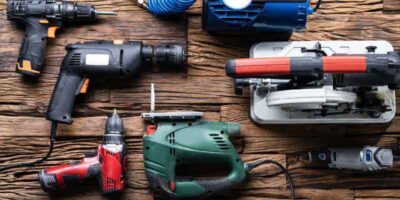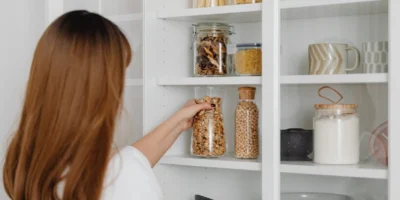Although parquet floor is characterized by a long life, its surface becomes dull over time and shows scratches. If you renovate your parquet or wood floor, you must first sand off the old varnish layer completely. We will explain how to sand a wood timber or parquet floor properly and give you practical tips.
If you want to sand down and then re-seal your parquet, that’s tiring and sweaty, but it works easier than many initially assume. In addition, you can save yourself some money for a company. Even deep scratches and dents, such as those caused by heavy furniture, can be easily removed by thorough sanding. If you proceed as follows, your result will be able to be seen later when you have finished to sand a wood, timber or parquet floor!
Sand a wood timber or parquet floor: You need
To sand a wood, timber or parquet floor, you need three different machines: roll Grinders, edger, Monodisc.
The sanders can be rented in rental shops or hardware stores. You also need sanding belts and paper grades 24, 40, 60 and 100, as well as a few sanding grids of 120 grit for fine and intermediate sanding. After that it’s called oiling, waxing or varnishing – to your taste.
These can be borrowed from any well-stocked hardware store. Alternatively, special machine rentals are good portals. You will also need the following equipment along the edges and corners for the finishing work: edger, angle, delta sanders.
What has to be considered in the parquet sanding machine?
Anyone who borrows a sanding machine for a parquet in a hardware store or in the wood specialist shop usually gets a small instruction manual and a brief briefing on the way. Nevertheless, there are quite a few things to consider, so that no expensive damage to the machine is done, for their repair is then asked to be paid for in addition to the rental.
Deep traces in the roller are avoided, for example, by sinking or pulling out all nails before grinding. The grinder has a better grip with a safety belt, which also relieves the body when you sand a wood, timber or parquet floor.
Also, consider appropriate protective equipment such as hearing protection, dust mask and knee pads. All this you get exactly like the corresponding sealing paints, oils or waxes also in the hardware store. Which medium is best suited for surface treatment and how you seal, oil or wash wooden planks, you can read here.
This is how you proceed
For a good result at least three sanding cycles with finer sanding paper are necessary. Let’s start with the first rough grinding process. Depending on the damage or wear of the soil you have to choose the coarsest grain size. In our case, it was a 24er grit.
Multi-layer parquet has a wood grain layer of 2.5 mm to 6 mm. When abrading about 0.5 mm are removed, so there are several sanding operations possible. Massive planks can be even more refreshed.
Expect 2 sanding belts per 10 square meters of plank surface, in our experience the coarsest grit is subject to the fastest wear, whereas the 100 sanding belts last longer.
Before you get started with the actual work, you should first remove all old wooden sockets in the room. Next you have to insert the correct sandpaper into the sanding machine. As a rule, you need three sanding steps for parquet. For each one use sandpaper with a different grain:
Sanding: grain 24
Sanding: grain size 40
Sanding cycle: grain size 60
Sanding cycle: grain size 100
Sanding surfaces
- Just borrowing a machine from the hardware store and sanding it down is not a good idea – there will be visible traces of sanding if you do not do it right:
- From the wall, grind diagonally to the floorboard (grit 24, 40, 60). In the same lanes, you then loop again in the opposite direction.
- The next cut is diagonal again, now in the other direction – the same procedure as in the first gear. The floor is now leveled.
- Only with the last, the 100er grit, the boards in the grain direction grind. Again, then work in the opposite direction.
- During the grinding process, move the machine half a track over and over again until you have finished the complete surface.
- Important: Never sand in curves or stand with lowered roller!
 Gerhardt Richter is a writer and a trainer at trade technical colleges, specializing in carpentry, plumbing, mechanics and construction.
Gerhardt Richter is a writer and a trainer at trade technical colleges, specializing in carpentry, plumbing, mechanics and construction.




